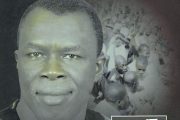It can be seen that behind-the-scene moves are afoot to resolve the electoral stalemate that has been rapidly developing in the past few days in Nigeria. That would seem to be the way forward.
Still, two-third of 36 states seems to be cropping up again. A leading political scientist gave this sketch of it: A controversy is brewing in Nigeria on the interpretation of the rule requiring the winner of a presidential election to obtain a quarter of the votes in each of the 36 states and the Federal Capital Territory (FCT), following the failure of Tinubu to get 25% of the votes in the FCT.
Lawyers are divided on the rule. Some believe the rule requires a candidate to get 25% of the votes in two thirds of the states, and 25% of the votes in the FCT. Others believe the FCT should be treated as a state and added to the 36 states—meaning a candidate should get 25% of the votes in 37 states.
The Labour Party (and possibly the PDP) is pushing the first interpretation. This is likely to be resisted by the APC.
If the latter interpretation is what the framers wanted, I think it would have been neater to state that a candidate should secure 25% of the votes in two thirds of the states, including the FCT, which is treated as a state. The Supreme Court will be dragged into this as in 1979 when there was controversy over what constituted 25% of 19 states.
This is what Section 134, subsection 2 of the 1999 constitution says:
“A candidate for an election to the office of President shall be deemed to have been duly elected where, there being more than two candidates for the election-he has the highest number of votes cast at the election; and he has not less than one-quarter of the votes cast at the election in each of at least two-thirds of all the States in the Federation and the Federal Capital Territory, Abuja.”
Interestingly, what constitutes two-third of the states is not a new controversy. It happened before in the Second Republic, ending up in the book by Labanji Bolaji called Shagari, President By Mathematics.
It is a January 1st, 1980 book. It is not a text most of the young people on the barricades today would have read or be very much aware of. According to the cataloguing platform – Goodreads – it is a “comprehensive examination of the Nigerian general elections in 1979, and how Mr. Shagari emerged as President, eventually – with the help of the Judiciary”
What constitutes 2/3 of 24 states, (Nigeria was a 24 state structure then) was the controversy then. The Federal Electoral Commission – FEDECO- forerunner of today’s INEC had been interpreting that requirement in terms of 13. It insisted, for instance, that for parties to be considered national, it must have functional offices in 13 states of the federation.
But, in the presidential election, the defunct National Party of Nigeria, (NPN) won in 12 states and much less than 2/3 in the 13th state. That was Kano where the People’s Redemption Party, (PRP) was the landlord.
So, the question was what exactly constituted 2/3 of 24? Was it 12 or 13? Politically, it was 13. Mathematically, it would be 12 and some fraction.
In the interlude, Chief Richard Akinjide, a lawyer and an NPN stalwart ventured the opinion that the answer was 12 and 2/3, not 13. When the case went to court, the court adopted an interpretation that became an endorsement of Akinjide’s argument. Labanji Bolaji, a prolific journalist and an Awoist then put pen to paper to produce what the publishing house described above.
In the event that the developing electoral impasse assumes that turn, the book may be smartly reprinted and would sell very well, proving the thesis that meaning is deferred.
It is beginning to look like, either way, this democracy favours lawyers. Should a judicial tussle over 2/3 develop, lawyers will get all the money, leaving everyone else stranded. Chai!




























